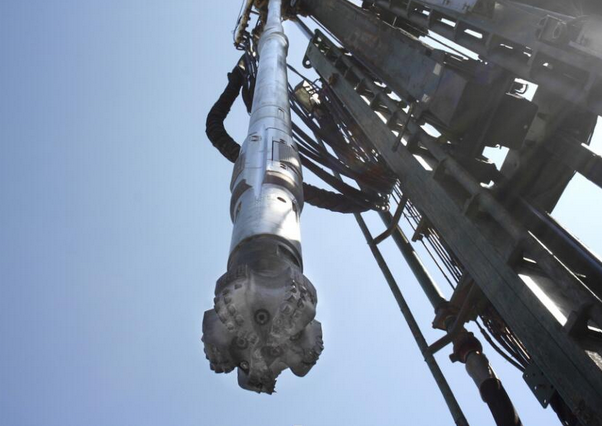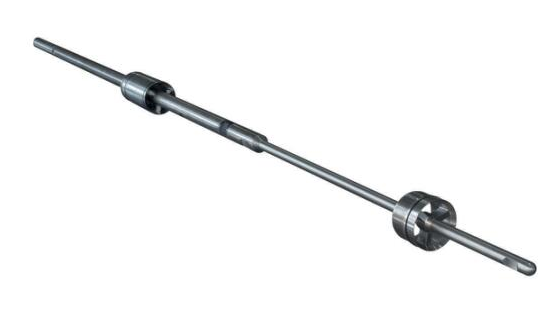



Oilfield drilling equipment manufacturer APS manufactures parts using metal 3D printing technology
2022-08-16
Imagine just standing outside the house and you can drill a hole in the wall of the living room and go through the hallway to the bedroom. It sounds incredible. Although it is not necessary to use such extreme drilling methods in home construction, in the oil and gas industry, such incredible feats are performed every day.
In deep wells around the world, drilling machines often need to penetrate multiple rock formations to drill holes as deep as a few miles. Drills often need to be tens of thousands of feet deep underground, through complex hole geometry to determine the direction of the wellbore... ... such a harsh operating environment poses a challenge to the performance of oilfield drilling equipment. APS Technology, an oilfield drilling equipment manufacturer, uses metal 3D printing technology in the development and manufacture of drilling equipment components. This technology not only saves time for the shop, but also extends the life of drilling equipment and improves drilling efficiency. Outstanding performance.
In this issue, Xiaobian combines APS Technology's case of manufacturing drilling equipment components through the EOS DMLS metal 3D printing system, and shares with netizens what value the additive manufacturing technology has created for drilling equipment manufacturers and users in the oil and gas industry.
Additive manufacturing to create a new drilling experience
Challenge: How to improve the durability and flexibility of drilling equipment?
APS Technology is one of the most advanced and reliable companies in the world, offering on-site performance and ideal design to meet a wide range of oilfield and harsh environmental requirements. The company was founded in 1993 in Connecticut, USA.
Around the world, drilling machines often need to penetrate multiple rock formations to drill holes that are several miles deep. Drill bits often need to be tens of thousands of feet deep underground to determine the direction of the wellbore through complex hole geometries. APS Technology combines a measurement while drilling (MWD) with a rotary steering system (RSS) that can be mounted directly below the drill bit to measure the drilling position and control the trajectory in real time.
In addition to the self-evident difficulties encountered when cutting rocks hundreds of feet underground, the pressurized fluid used to cool the drill bit and wash away the cuttings is also severely abraded and quickly lost. This can severely damage downhole systems and many other types of drilling equipment, and can even destroy super-hard Inconel and 17-4 stainless steel.
For today's energy producers, these difficulties are just the tip of the iceberg. In addition to the MWD system, APS is also dedicated to providing drilling operators with a wide range of smart tools including directional drilling motors, dampers, modeling and analysis tools and logging sensors. Previously, APS has completed a number of continuous improvement efforts by tailoring 3D printed plastic parts for design verification with a variety of additive manufacturing methods. In order to create complex metal parts that can be used in real-world environments, APS introduced metal 3D printing technology.

Drill Bits and Rotating Guide Systems (RSS): APS Technology currently uses EOS Industrial 3D printing technology to produce complex components in rotary steering systems to effectively guide oil and gas wells. Image source: APS
Solution: Adding more complex parts than ever before
EOS has the ideal solution for APS: Additive manufacturing of durable metals with the EOSINT M 280 system. APS can use this technology to build durable parts in a short period of time. With the DMLS metal 3D printing technology of the EOSINT M 280 system, designers can create complex geometries that were previously impossible to manufacture and easily address such challenges. For example, you can create a variety of lattice structures and fine mesh structures that produce parts that are more space efficient than traditional, machined products of the same type.

The entire MWD system: Some internal turbine components are printed out by the EOSINT M 280 system. Image source: APS
[When I first came to APS, the system was just around a month here," recalls Paul Seaton, vice president of marketing at APS Technology. [Colleagues conducted a series of test proofing and other work to familiarize themselves with the system, but it was a completely new technology for all of us. EOS provided us with on-site training and application recommendations that allowed us to get started quickly. Prototyping of components. These early achievements have made our work more production-oriented today."
One of the achievements is the application of a five-stage turbine to power the pilot bit and its onboard MWD system. Each turbine contains several parts printed using DMLS technology. In this additive manufacturing process, the EOSINT M 280 traces the ultra-thin sections of the CAD model to the fine metal powder layer using high-power Yb fiber lasers and precision scanning optics. on. Wherever the laser passes, each individual metal particle melts and merges with adjacent particles and the next layer. After each layer is laser-irradiated and melted, a new layer of metal powder is placed on the gradually formed workpiece and the above-described processing is repeated, layer by layer until processing is completed.
Each turbine consists of several complex end caps and five sets of stators and rotors, all of which are manufactured by APS's EOSINT M 280. [Now, we have the ability to make these components from stainless steel, Inconel and other metals, which is a huge advantage for us because we can use 3D printing technology to create real parts and apply them to the real environment. Medium," Seaton said. Senior mechanical engineer Chris Funke said the components are absolutely capable of handling drilling operations in real-world environments, including in the company's own 3,000-foot-deep test well.
The result: saving manufacturing costs and cycles, improving equipment drilling efficiency and durability
With EOS technology, APS was able to reduce the number of components in the drilling assembly from four separate components to just one. DMLS also helped the company's large-scale manufacturing shop save costs, and fixtures and fixtures that used to take days or even weeks to manufacture can now be printed overnight in an unattended situation. In addition to the advantages of reducing the number of parts and creating new component shapes, APS designers have found that this technology can significantly shorten the product development cycle.
The use of DMLS 3D printing technology can open up many other ideas for APS. Parts produced using the additive manufacturing process are closer to the expected geometry than before, so downstream processing operations are often simplified, and in some cases these operations can be completely eliminated. In addition, the new technology has helped APS save on mold and other one-time processing costs, and only CAD models and metal powders are enough. [Now we can supply DMLS parts for the shop. It may take up to 18 hours to manufacture the same parts from bars using traditional methods," Funke points out. [It takes 22-26 hours to print a part, but it has features that are unmatched by traditional methods, such as organic holes.
Today, the shop takes only 3-4 hours to machine the sealing surface and further control the tolerance characteristics to complete the part. Therefore, with the DMLS process, we can save the shop floor time by 14-15 hours to produce other products. DMLS is changing our entire manufacturing process, giving us more power to run other projects and even undertake other jobs. We plan to do more work for us with the EOSINT M 280. Said Funke.